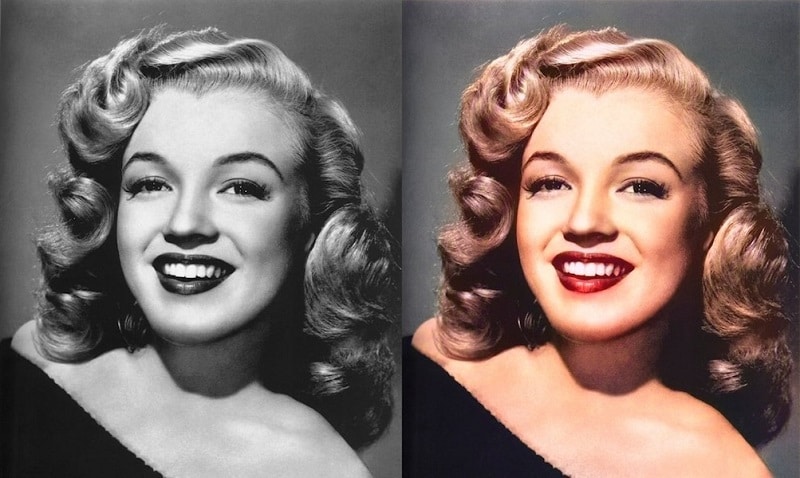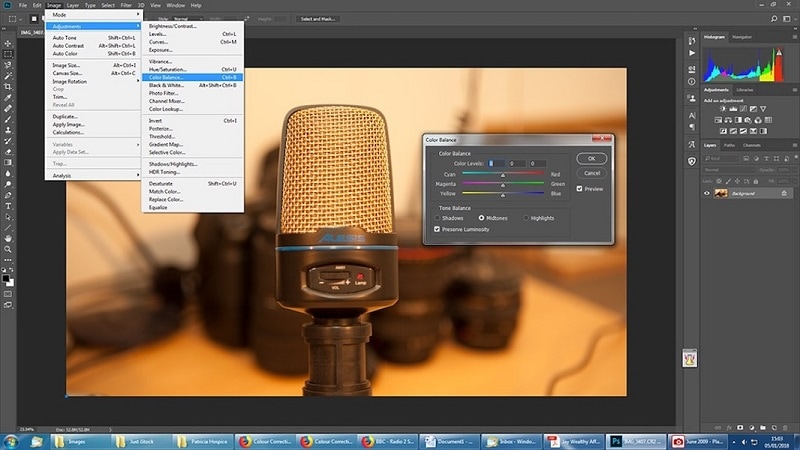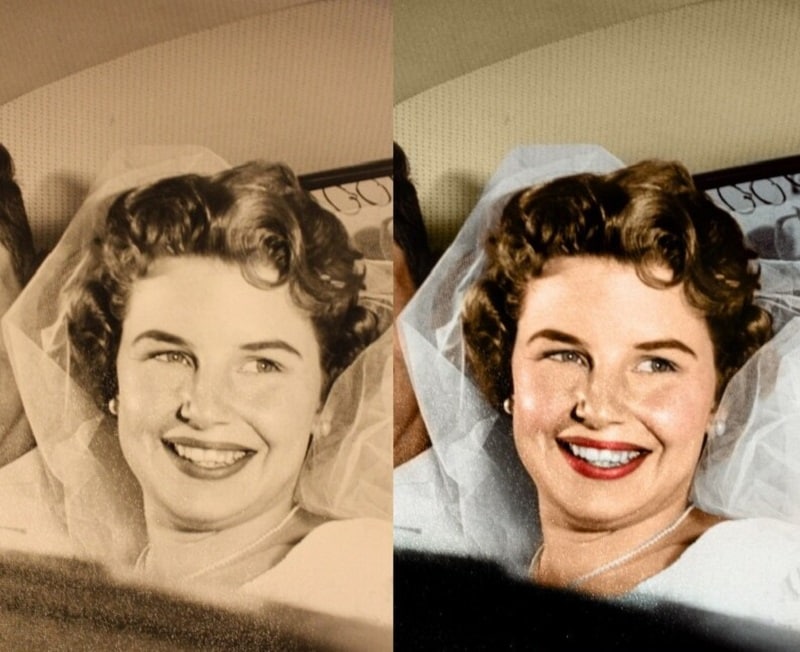In today’s digital age, capturing precious moments through photographs is easier than ever. However, older photos or those taken with less sophisticated cameras may only sometimes reflect the true colors of a scene. This can be a concern if you want to use these images for creative projects, online presentations, or even personal decoration.
The good news is that there are numerous ways to recolor images, and with the constant advancements in technology, these methods are becoming more accessible and sophisticated. This guide will equip you with the knowledge and tools to recolor pictures. After reading this, you’ll be ready to breathe new life into your pictures.

In this article
Part 1. Where Is Image Recoloring Used?
Recoloring images involves altering hues and shades within a digital image. This can be done for various purposes, from correcting faded or inaccurate colors to completely transforming the visual mood of a photograph. After all, colors significantly shape an image’s emotional impact and overall message.
For example, warm colors like red and orange often evoke excitement or energy, while cooler tones like blue and green can create a sense of calmness or tranquility. When recoloring images, take note of the different moods or messages of colors.
Recoloring images finds application in various scenarios:
- Restoring colors in order photos. Over time, photographs can lose their vibrancy or develop color casts due to fading or the limitations of older camera technology. Recoloring can help restore these images to their original glory or even enhance them with a more contemporary color palette.
- Theming and style. Image recoloring allows creative control over a photo’s overall mood and style. Imagine transforming a bright beach scene into a vintage postcard with muted tones or creating a futuristic cityscape with a dominant neon color scheme. This technique can be beneficial for achieving visual consistency within a photo set, website, or specific project.

- Color enhancement. Sometimes, even relatively new photos might benefit from subtle color adjustments. Pictures recolored can improve the overall color balance, enhance specific tones, or correct minor color imperfections for a more visually pleasing image.
These are just a few examples, but the possibilities for image recoloring are vast. With creativity and the right tools, you can breathe new life into your photos and tailor them to suit your specific needs.
Part 2. How To Recolor Digital Images
While image recolored can be applied to physical photographs through software, the process is most straightforward and versatile with digital photos. Here, you can manipulate every aspect of the image using a computer program. Let’s delve into some popular methods for achieving stunning results:
Method 1: Recoloring Images Manually With Tools
For those comfortable with essential image editing software, manual tools offer precise control over the recolored process. Here’s what you need to know:
Several programs can be used for image recoloring, even online. Free options like Microsoft Paint or GIMP provide basic functionality, while more advanced software like Adobe Photoshop offers a broader range of tools and functionalities. Canva is another popular option that balances user-friendliness and powerful editing features.

The specific steps for manual recoloring will vary depending on the chosen software, but the general principles remain consistent. You can select specific color ranges within the image and then adjust their hue, saturation, and luminance to achieve the desired effect. Additionally, some programs offer tools like “Replace Color” or “Selective Color” for targeted adjustments.
Method 2: Using AI in Recoloring Digital Images
Artificial intelligence (AI) technology presents a streamlined approach to image recoloring, offering innovative solutions for those seeking automation. These automated recoloring tools employ sophisticated algorithms, eliminating the need for manual intervention when modifying images. Here is a simplified yet intelligent overview of this method:
AI-Powered Platforms
Online platforms and applications utilize AI algorithms for automated image recoloring. These platforms leverage machine learning models trained on extensive datasets to comprehend color relationships accurately, enabling the generation of realistic recoloring results. Users can effortlessly upload their images, leaving the intricate work to the AI.

Neural Networks
The core technology behind many AI-powered recoloring tools is neural networks. These computational models are trained to recognize patterns and relationships within images intelligently. Consequently, they can modify colors while preserving the overall structure and content. Neural networks exhibit adaptability to different styles and artistic preferences, making them versatile tools for image recoloring.
Customization Options
AI-powered recoloring tools feature user-friendly interfaces with customization options. Users can tailor the output to their preferences by adjusting color change intensity, specifying color palettes, or choosing predefined filters that match the desired aesthetic. Although the level of control varies, many tools strike a balance between automation and user input.
Real-Time Preview
Some AI recoloring tools provide real-time preview features, enabling users to witness changes instantly before finalizing the recoloring process. This interactive element enhances user experience, ensuring adjustments align with the intended vision.
It’s crucial to acknowledge that the effectiveness of AI-powered recoloring tools can vary. Results may depend on factors such as image complexity, AI model quality, and the customization options offered by the platform or application. Exploring different tools and experimenting with various settings can assist users in finding the optimal solution for their recoloring requirements.
Part 3. Tips To Follow When Recoloring Images
Whether you’re a seasoned image editing pro or just starting with recoloring images, mastering key techniques can significantly enhance your results. Here are some valuable tips to elevate your recolored creations:

Embrace the Power of Color Theory
A basic understanding of color theory can go a long way in achieving aesthetically pleasing recolored images. It explores the relationships between colors, such as complementary colors (opposites on the color wheel) that create a sense of contrast or analogous colors (neighbors on the color wheel) that produce a harmonious effect.
Selecting Right Tools
As explored earlier, the tools you use for image recoloring will significantly impact your experience and outcome. If you’re new to the process, free software like GIMP or online tools like VanceAI can be excellent starting points. As your skills develop, consider investing in more advanced software like Adobe Photoshop, which offers comprehensive features for professional-grade recolored work.
Importance of Image Quality
The quality of your starting image plays a crucial role in achieving successful recolored results. A high-resolution image with good contrast and minimal noise will provide a much better foundation for manipulation than a blurry or pixelated image. If you’re working with physical photographs, ensure a high-quality scan before proceeding with the recolored process.
Magic of Layers
Using layers is a powerful technique in most image editing software. It allows you to make non-destructive edits to your image, meaning you can quickly go back and adjust specific color changes without affecting the entire image. This is especially helpful when experimenting with color palettes or refining your recolored work.
Brightness and Contrasts
While color plays a central role in image recoloring, brightness and contrast adjustments are equally important. A well-balanced image with proper exposure will showcase your color choices more effectively. You can often find brightness and contrast adjustment tools within the same software you use for recoloring.
Practice Makes Perfect
As with any skill, practice is critical to mastering recoloring pictures. Don’t be afraid to experiment with different techniques, color combinations, and software functionalities. The more you practice, the more comfortable and confident you’ll become in achieving the desired results.
Remember, the ultimate goal of image recolored is to breathe new life into your photos and express your creative vision. By following these tips and exploring the available tools, you’ll be well on your way to transforming your images into stunning works of art.
Conclusion
In conclusion, image recoloring offers a powerful tool for enhancing and revitalizing your digital photos. Whether you’re correcting faded colors in old photographs or achieving a specific aesthetic for a creative project, the possibilities are vast. With a basic understanding of color theory, the right tools, and a touch of practice, you can unlock the potential to transform your images and tell their stories through a whole new lens.
So, grab your favorite photo editing software or explore AI-powered solutions. This way, you can go on a creative journey of recoloring an image.




